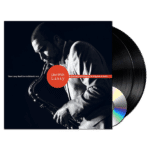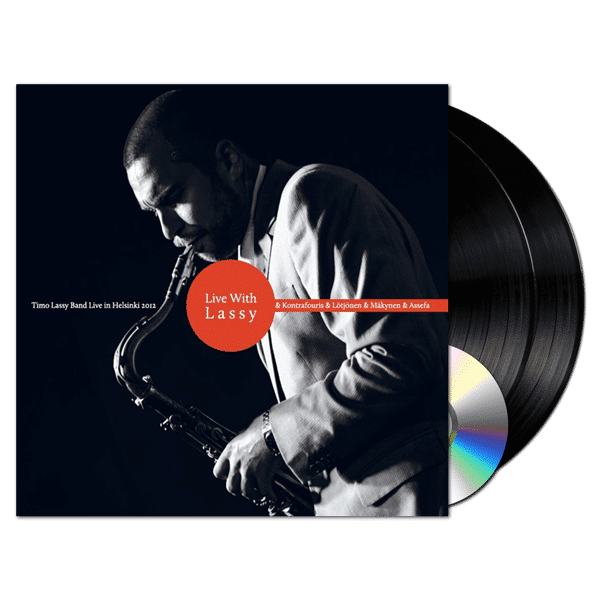ABOUT THIS RELEASE
In late 2012, after the release of my third LP, “In With Lassy”, we started touring the material. As the studio recording already was a relaxed “cooking session”, we began looking for a new way to approach the material. The band already had a history of some 5 years of playing together, so we were confident that the sense of life dynamics for this music would come quite naturally. It did. A key element was striving for a common goal: to make the ensemble sound better. None of us in this band is here to prove anything. All of us have the freedom to take whatever we find in the music, react to it, and aim for making the texture and the dynamics work. I think in live situations it’s all about enjoying what you do, and while doing that, giving and receiving feeling. Interaction. I think you can hear it on these recordings. The band is captured at a great moment in its development and at a very relaxed mood. It’s wonderful for me to hear how the venue, the audience, the band and the music come together to create something new.
Timo Lassy
ABOUT GREAT BANDS
If you would ask me how to tell a great band apart from all the quite good ones, my answer would be to just listen to any given group live for three nights in a row. See if you still think they sound fresh for your ears during the encore of the third show. Timo Lassy Band does. One music journalist calle the “In With Lassy” relase club nights a “mini festival”. That works, sure. There were some great opening acts, proving that there’s a future for jazz in Finland, some topical guests at our talk show, and a lot of people who make all this worthwhile. All of the gigs sold out in advance. Damn, somebody even bought the entire Lassy back catalogue on vinyl in one go from the record stand. That’s dedication.
Matti Nives
ABOUT THESE RECORDINGS
We recorded the Dubrovnik gigs using the legendary Nagra IV-S recording system and the equally iconic Bang & Olufsen BM5 stereo microphones. The Nagra dates back to the 1970’s and the B&O’s to somewhere around the 1960’s. It’s a very simple setup. The Nagra system was invested by the Polish Stefan Kudelski and the word “nagra” itself means “to record”. Due to its compacts size, it has been used for capturing countless of live shows. Perhaps the most important thing here was the fact that the band not to mention Timo himself, was not informed of the planned recording. The whole idea was completely ex tempore. So there was no pressure on the performance.
The gigs were live mixed by Ilari Larjosto, who also assisted in the recording process. His way of changing tapes on the go was very smooth indeed. That’s the downside of using the Nagra: you can only tape something like 30 minutes of music on one go, depending on the recording speed.
As this was a very spontaneous effort, we didn’t have too many new tapes at hand. Thus, we had to re-use some older tapes. Maybe you can here some crackling here and there because of this if you listen carefully. Still, I think these tape capture the mood and the ambience of those three nights quite well. I credit some of it to the method of recording described above, of course to the band, and also to the wonderful audience you can hear reacting to the music here.
Abdissa Assefa




